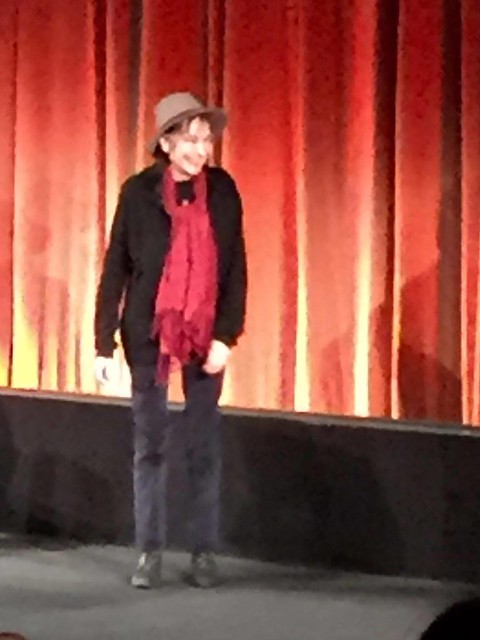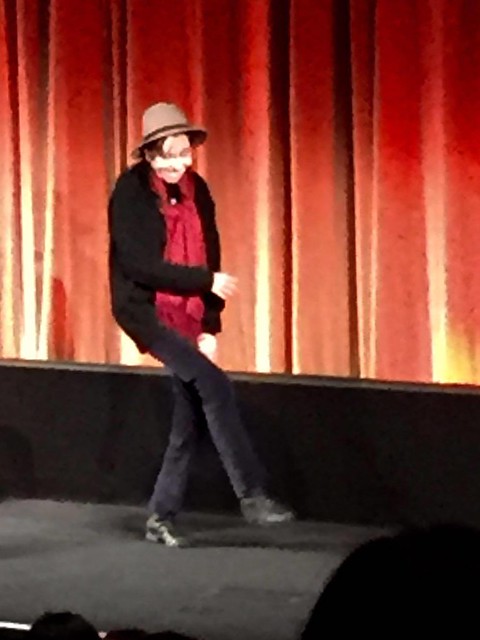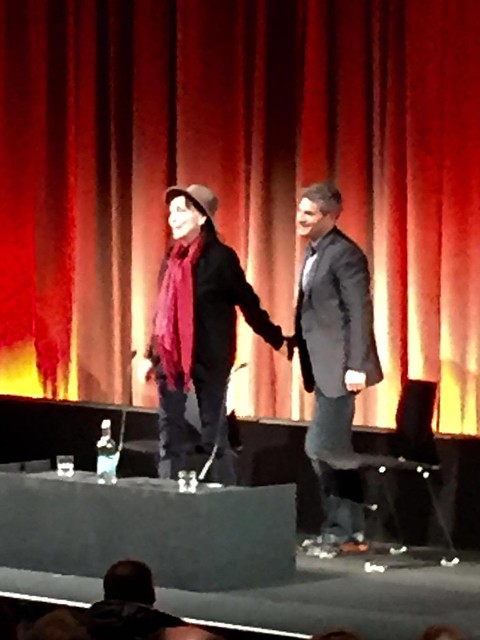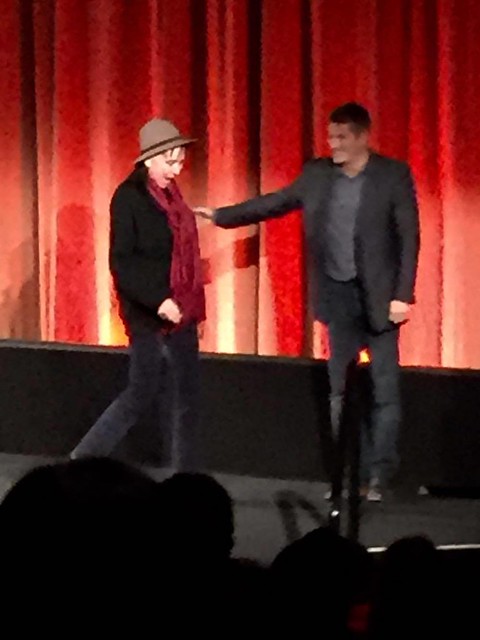Friday night (5 October) we watched the gloriously tortured melodrama Autumn Leaves (1956) – an ideal way to conclude the British Film Institute’s Joan Crawford retrospective (Fierce: The Untameable Joan Crawford, August - October 2018).
I was very disciplined about this Crawford season and only saw two other films: the freaky silent horror movie The Unknown (1927) (all about extreme body modification / amputation and obsessive love, which teamed young starlet Crawford with Lon Chaney as an armless knife thrower!) and A Woman’s Face (1941) (in which Crawford portrays an embittered facially-disfigured criminal who changes her ways once she undergoes plastic surgery and finds love).
In the fifties, cinema’s bitch goddess extraordinaire Crawford made a
whole cycle of middle-aged women-in peril-films that found her in love with
dangerous younger men (see also Sudden Fear (1952) and Female on the Beach
(1955)) - all of them great. In Autumn Leaves Crawford is Millicent Wetherby, a prim, lonely and
quietly desperate forty-something spinster who finds herself unexpectedly romantically
entangled with dishy, significantly younger man Burt Hanson (Cliff Robertson).
They impulsively marry, and Millicent soon discovers – too late! – that she knows
almost nothing about her profoundly troubled, weirdly childlike and secretive new
husband.
Millicent is meant to be a frumpy and sexually repressed typist, thus Crawford’s onscreen wardrobe is mostly restricted to high-necked, ultra-modest blouses and full skirts, with cardigans draped around her shoulders – but that “mousy” wardrobe is by Hollywood costume designer deluxe Jean Louis! Think haute couture librarian. (Crawford also wears a seriously pointy and gravity-defying underwired bullet bra throughout).
(An aside: Crawford was the original choice to play the role of Karen Holmes in the film From Here to Eternity (1953). Deborah Kerr was ultimately cast instead when the producers balked at Crawford’s demand that she bring her own cameraman. The single most famous image from From Here to Eternity is of Kerr and leading man Burt Lancaster kissing passionately on the beach while the surf crashes and foams around them. Interestingly, Autumn Leaves painstakingly recreates this scene!).
Millicent is meant to be a frumpy and sexually repressed typist, thus Crawford’s onscreen wardrobe is mostly restricted to high-necked, ultra-modest blouses and full skirts, with cardigans draped around her shoulders – but that “mousy” wardrobe is by Hollywood costume designer deluxe Jean Louis! Think haute couture librarian. (Crawford also wears a seriously pointy and gravity-defying underwired bullet bra throughout).
(An aside: Crawford was the original choice to play the role of Karen Holmes in the film From Here to Eternity (1953). Deborah Kerr was ultimately cast instead when the producers balked at Crawford’s demand that she bring her own cameraman. The single most famous image from From Here to Eternity is of Kerr and leading man Burt Lancaster kissing passionately on the beach while the surf crashes and foams around them. Interestingly, Autumn Leaves painstakingly recreates this scene!).
If – like me – you love watching Crawford undergo heavy emotional anguish,
this is the film for you! In a mesmerizing, almost operatic performance
Crawford’s face gradually becomes a taut, tense mask of suffering. (No one does
eyes-glistening-with-tears quite like Crawford). Cliff Robertson is impressively
tormented as Burt (a study of 1950s masculinity in crisis to compare with
Robert Stack in Written on the Wind or James Mason in Bigger Than Life) and is
fit as fuck (especially when wearing a white t-shirt so tight the outlines of his nipples are
visible!). Stir into the mix Nat King Cole crooning the lushly romantic title
track, Lorne Green and Vera Miles as a pair of genuinely sleazy villains, a shocking scene of domestic violence and brutal close-ups of electric shock therapy and you get a vividly memorable and exemplary atomic-era “woman’s
picture”.
Perhaps the zenith of Crawford’s performance is when she encounters Green and Miles on the street and tears into them with a vengeful rant. "Where's your decency?” Millicent demands. “ In what garbage dump, Mr Hanson? And where's yours, you tramp? You his loving, doting fraud of a father and you, you slut! You're both consumed with evil so rotten your filthy souls are too evil for hell itself!"
Perhaps the zenith of Crawford’s performance is when she encounters Green and Miles on the street and tears into them with a vengeful rant. "Where's your decency?” Millicent demands. “ In what garbage dump, Mr Hanson? And where's yours, you tramp? You his loving, doting fraud of a father and you, you slut! You're both consumed with evil so rotten your filthy souls are too evil for hell itself!"
Autumn Leaves was directed by the hard-boiled Robert Aldrich (who makes
some virtuoso, jarring stylistic choices. I especially love Aldrich's strange, dream-like flashback to Millicent's life as a younger woman). As viewers of Feud: Bette and Joan already
know, Crawford and Aldrich would triumphantly reunite in 1962 for Whatever
Happened to Baby Jane?





























